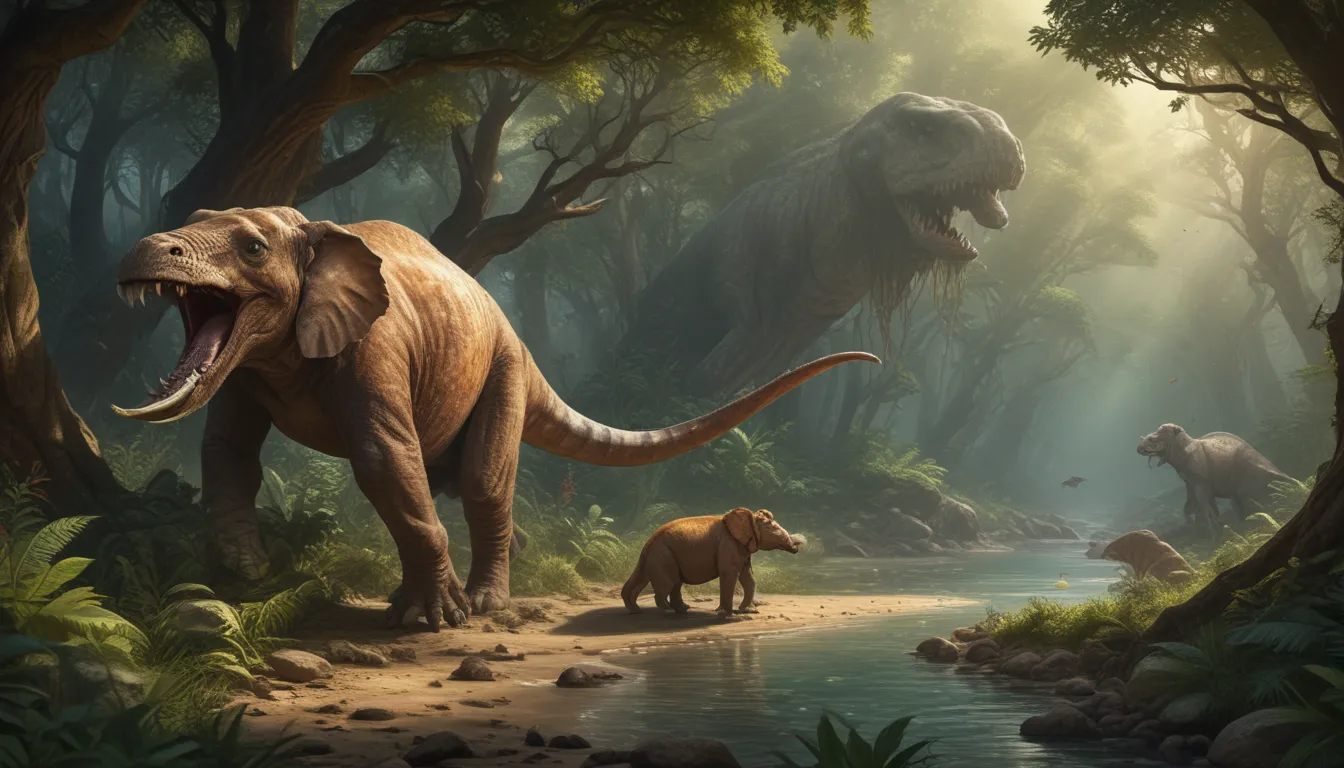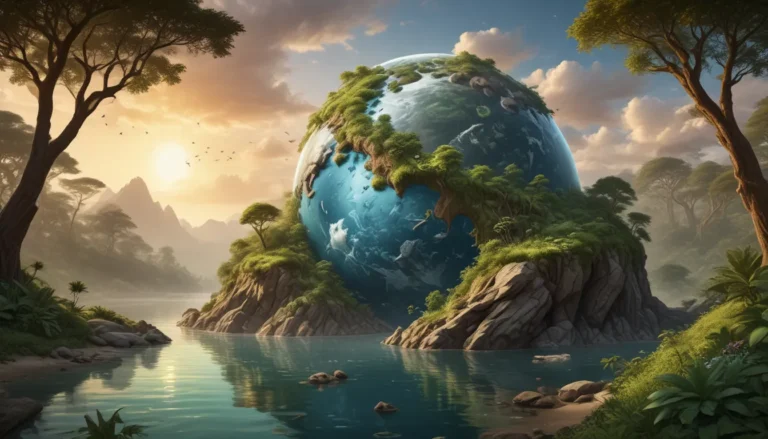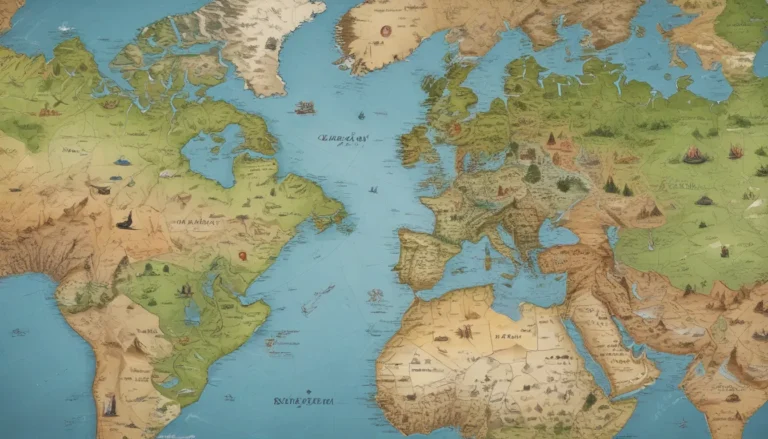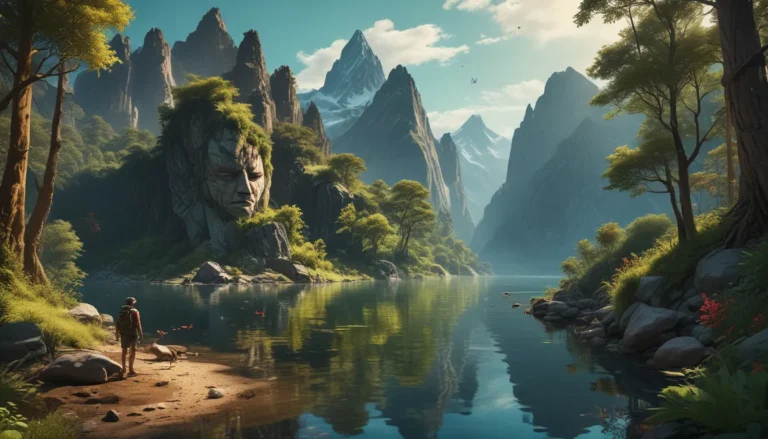A Note About Images: The images used in our articles are for illustration purposes only and may not exactly match the content. They are meant to engage readers, but the text should be relied upon for accurate information.
Welcome to the enchanting world of paleoecology, where the mysteries of Earth’s ancient ecosystems are unveiled through the lens of science. From deciphering fossilized remains to analyzing sediment layers, paleoecologists illuminate the past environments and the organisms that once thrived within them.
Join us on a captivating journey as we uncover 16 unbelievable facts about paleoecology that will leave you in awe. Let’s embark on a virtual excavation into the realm of long-extinct creatures, ancient landscapes, and the interconnected web of life that has woven through history. It’s time to dust off your curiosity and dive deep into the fascinating world of paleoecology!
Unveiling Ancient Secrets:
-
Uncovering ancient secrets: Paleoecology utilizes a range of tools, including fossilized excrements, leaves, and DNA, to unveil the prehistoric diets, climates, and species interactions, shedding light on the Earth’s history and evolution.
-
Lessons from the past: By delving into ancient ecosystems, paleoecology offers valuable insights into climate change, mass extinctions, and conservation, providing essential lessons for our planet’s future.
Decoding the Past through Fossilized Remains:
Paleontologists can unveil a wealth of information by analyzing fossilized feces, scientifically known as coprolites. Through the remnants found in coprolites, researchers can unravel the dietary habits of extinct species, offering a window into the culinary preferences of animals that roamed the Earth millions of years ago.
Tracing Ancient Climate Patterns with Fossilized Leaves:
Fossilized leaves serve as nature’s time capsules, preserving vital clues about past climates. By examining the physical characteristics of leaf fossils, scientists can infer details about temperature, rainfall, and atmospheric conditions prevalent in ancient environments.
Piecing Together the Puzzle of Mass Extinctions:
The study of ancient ecosystems provides a crucial understanding of the causes and consequences of mass extinctions throughout Earth’s history. By reconstructing past landscapes and species interactions, scientists can shed light on the mysteries surrounding these catastrophic events.
Unraveling Migration Patterns through Isotopic Analysis:
Isotopes, the elemental variants with differing neutron numbers, offer a unique lens into the migration routes of ancient species. Through the analysis of isotopic compositions in fossilized remains, researchers can trace the movement of animals across vast distances, unraveling the migratory histories of extinct creatures.
Tracing Evolutionary Paths of Plants and Animals:
Examining ancient ecosystems allows scientists to track the evolutionary trajectories of species across time. By comparing fossil records with present-day organisms, researchers can discern the intricate patterns of evolution that have shaped the diverse life forms inhabiting our planet.
Illuminating Past Vegetation with Ancient Pollen:
The remnants of pollen grains nestled within sedimentary rocks provide a glimpse into the verdant landscapes of ancient times. By identifying various pollen types, paleobotanists reconstruct the composition of past forests, offering insights into historical changes in biodiversity.
Navigating Climate Change through the Ages:
Studying the impacts of climate change on ancient ecosystems equips paleoecologists with valuable insights into the resilience of natural systems. By exploring past climatic shifts and their repercussions, scientists can better understand the potential effects of contemporary and future environmental changes.
Documenting Behaviors through Fossilized Footprints:
Fossilized footprints immortalize the behaviors and movements of long-extinct animals, offering a unique perspective into their ancient lifestyles. These imprints provide clues about social interactions, hunting strategies, and migration patterns of prehistoric creatures.
Unveiling Genetic Relationships through Ancient DNA:
Advances in DNA analysis have revolutionized paleoecology by allowing researchers to extract and sequence ancient DNA. This breakthrough enables the exploration of genetic connections between past and present organisms, unveiling the evolutionary tapestry woven through millennia.
Nurturing Conservation Efforts through Historical Insights:
The study of past ecosystems and their responses to environmental shifts contributes invaluable knowledge to modern conservation practices. By drawing lessons from ancient disturbances, paleoecologists help predict the resilience of ecosystems in the face of ongoing and future threats.
Illuminating Marine Ecosystems through Ancient Rock Formations:
Fossils embedded within ancient marine rocks offer a treasure trove of insights into bygone oceanic ecosystems. From ancient corals to prehistoric fish species, these fossilized remnants illuminate the intricate web of interactions within marine communities.
Tracing the Roots of Agriculture through Plant Domestication:
Investigating the domestication of plants and the origins of agriculture is a pivotal aspect of paleoecology. By analyzing ancient plant remnants, researchers can unravel the emergence of early farming practices and their profound impact on human civilizations.
Drawing Lessons from Past Climate Change Events:
Examining historical climate change events preserved in sedimentary rocks provides valuable insights into the long-term consequences of global warming. By learning from the past, we can make informed decisions to mitigate the impacts of climate change and safeguard our planet’s future.
Unveiling the Web of Species Interactions:
Through meticulous examination of the fossil record, paleoecologists unveil the complex tapestry of relationships between ancient species. This knowledge offers insights into predator-prey dynamics, mutualistic bonds, and the intricate biodiversity that characterized past ecosystems.
Shedding Light on Ancient Diseases through Fossilized Bones:
The study of fossilized bones can unveil traces of ancient diseases, offering a glimpse into the evolutionary history of pathogens. By scrutinizing ancient DNA and signs of trauma or infection, paleoecologists contribute valuable insights to the field of paleopathology.
Bridging the Disciplinary Divide:
Paleoecology stands at the intersection of geology and biology, seamlessly merging the study of ancient environments with the understanding of living organisms. By integrating these disciplines, paleoecology provides a comprehensive view of Earth’s biodiversity and its evolutionary journey through time.
Closing Thoughts
In conclusion, paleoecology unravels the intricate tapestry of Earth’s history, illuminating the interconnectedness of life across epochs. From the astonishing diversity of prehistoric fauna to the profound impacts of environmental changes, this field of study offers a wealth of knowledge about our planet’s past. It also plays a vital role in shaping our understanding of ongoing environmental challenges and guiding us towards a sustainable future.
Through the lens of paleoecology, we gain a profound appreciation for the wonders of our planet’s history and the importance of preserving its natural heritage. As we delve deeper into the annals of time, paleoecologists continue to astonish and inspire us, urging us to explore further and uncover the secrets buried within Earth’s ancient landscapes.
FAQs
- What is paleoecology?
-
Paleoecology is a scientific discipline that explores past ecosystems, examining the relationships between organisms and their environment, as well as the influence of geological and climatic factors on these systems.
-
How is paleoecology different from paleontology?
-
While paleontology focuses on studying fossils to understand past life forms, paleoecology takes a broader approach by investigating the ecological contexts in which these organisms existed.
-
Why is paleoecology important?
-
Paleontology allows us to gain insights into how ecosystems have evolved over time and how they may respond to future environmental changes. It also contributes to our understanding of biodiversity, conservation, and the impacts of human activities on natural systems.
-
How do paleoecologists reconstruct ancient ecosystems?
-
Paleontologists use a variety of methods, such as analyzing fossilized remains, sediment cores, pollen samples, and isotopic data, to piece together information about past environments and the life forms inhabiting them.
-
What are some notable findings in paleoecology?
-
Paleontology has unveiled remarkable discoveries, including the coexistence of dinosaurs and early mammals, the repercussions of mass extinctions on ecosystems, and the influence of climate change on species distribution throughout history.
-
How does paleoecology contribute to conservation?
-
By shedding light on past ecosystems and their responses to environmental shifts, paleoecology helps us understand how human activities might impact present-day ecosystems, guiding conservation efforts to protect and restore biodiversity.
-
Can paleoecology help predict future environmental changes?
- While paleoecology cannot directly forecast future changes, it provides a historical context that empowers scientists to make informed predictions about the potential consequences of climate change and other environmental factors.
As we navigate the realms of paleoecology, each discovery and revelation deepens our understanding of Earth’s past and illuminates the path towards a sustainable future. Embrace the wonders of paleoecology as we continue to unravel the mysteries of our planet’s ancient history and chart a course towards preservation and exploration.






